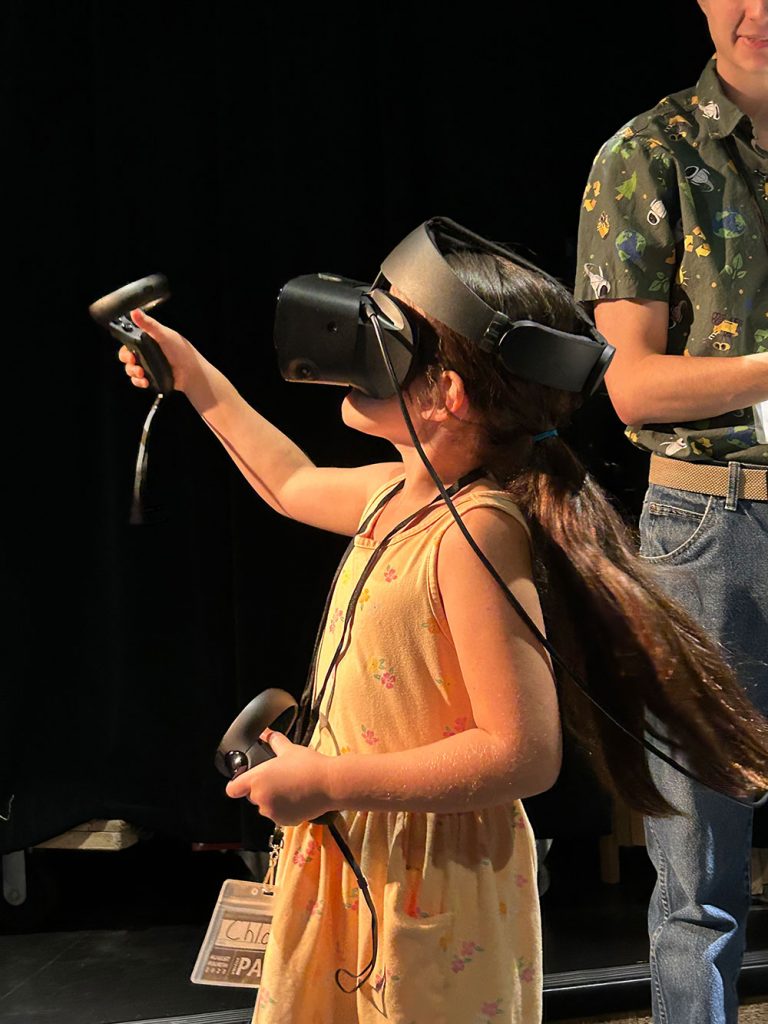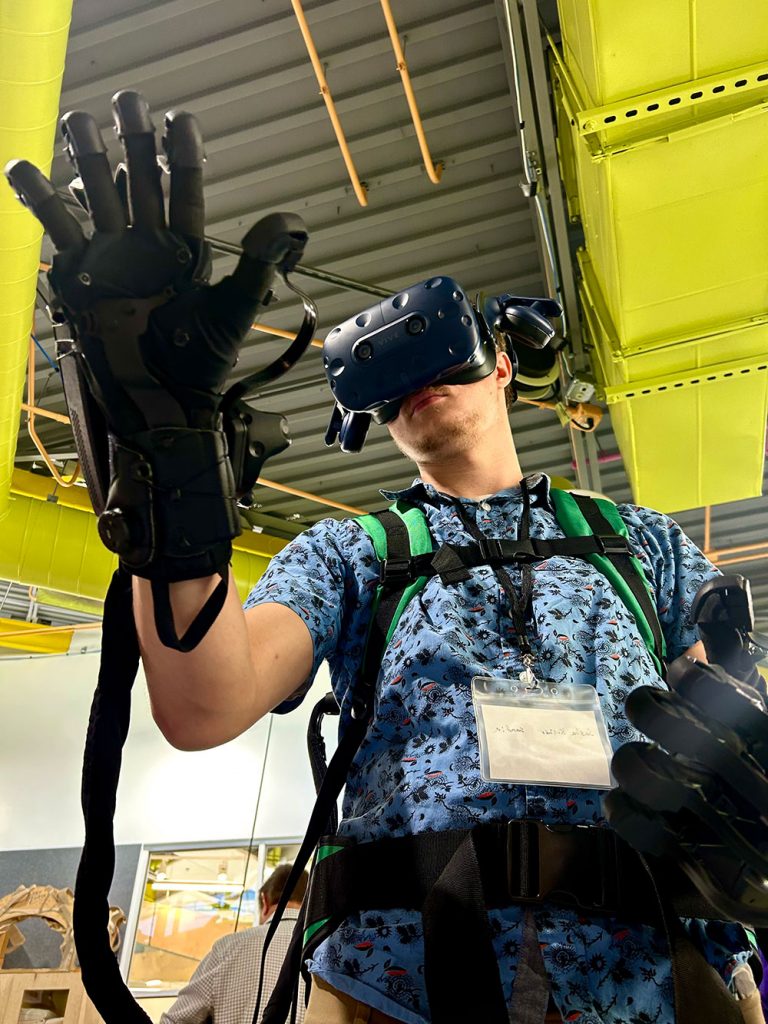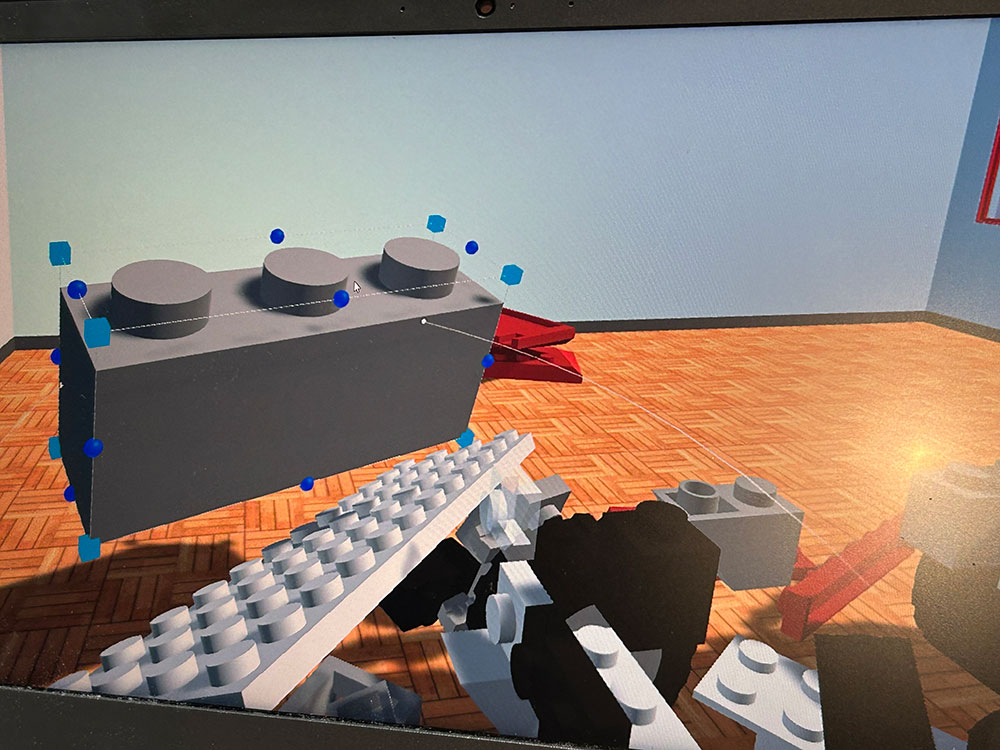Sandia shares XR tech with community

Imagine yourself as an explorer on Mars, a member of a rescue team tasked with finding trapped miners, a lab technician having to transfer vials filled with hazardous materials without actually touching them or a soldier equipped with X-ray vision like Superman, able to see through walls before entering a building. These are just a few of the scenarios people got to experience during XR Demo Day at Explora Science Center and Children’s Museum of Albuquerque.
The event provided a rare opportunity for the public to experience some of the extended reality, or XR, software that Sandia helps create along with companies like Microsoft Corp. and HaptX Inc. It opened up a whole new world for children like 7-year-old Chloe Lockett and 12-year-old Paloma Rodriguez who were tasked with building a virtual Lego car. “I was in there and didn’t even see anybody; it was just me and my feet. It was fun,” Chloe said.
“I thought it was amazing because I could do so many things. I liked how much I could interact with the Lego pieces by picking them up and then moving them. You could see all the detail and how they were put together. It was like I was actually there doing the work,” Paloma said.

But the event also intrigued adults. “It felt like you were right in there,” said Zhanna Williams, wife of Sandia solutions architect Derrick Williams. “I was tasked with putting together a broken maze; it really was just amazing.”.
NNSA has provided ongoing investments in XR technology and research at Sandia, helping grow its capabilities and applications. XR tech is used in various ways for Sandia’s key missions, including training, design, research, collaboration and knowledge retention.
The XR demo was part of Sandia’s fifth annual XR Conference, which brought together XR developers, enthusiasts, representatives from other national labs and the public to experience frontier XR technology for themselves.
“It’s rare that other labs get to see each other’s technology, that industry gets to meet with labs and that the public gets to see what we are doing at Sandia, all at the same event,” said Matthew Gallegos, a member of Sandia’s research and development team and the chair of this year’s XR event.
Some of the demonstrations used haptic gloves, which allow the user to not only maneuver through a virtual world but also perceive the feeling of virtual objects with their hands. In one scenario, participants worked inside a lab with a partner to move around glass test tubes. With each move, the gloves conveyed the sense their fingers were actually squeezing the tubes.

“It’s pretty cool; I can see how this helps with the training,” said Collin Anderson, who works at Los Alamos National Lab and attended the conference. “It helps the team with visualization. We do something similar but don’t have projects exactly like this.”
In one demonstration from HaptX, users were able to experience sensations of rain, clouds and flowers, and even fight off extraterrestrials who had invaded a farm.
Visitors also got to put on a Microsoft HoloLens headset and walk around a computer-generated model of the Curiosity rover as if it were physically there, tour the Mars Gale Crater in augmented reality, interact with Sandia’s Gemini-Scout Mine Rescue Vehicle, look at molecules and change a tire in virtual reality, peer into a holographic display, communicate with artificial intelligence and take the Spot robot for a walk.
This team is already working on next year’s XR Conference and Demo Day. “It’s an opportunity to bring together national labs, industry and academia with a focus on XR. It creates synergy, business opportunities and partnerships,” Matthew said.
Team members also say it serves as an engaging and fun way to learn about various roles that one could transition to within Sandia. But another goal, of course, is to reach out to children and inspire.
“After all, they are our future Sandians,” Matthew said.
